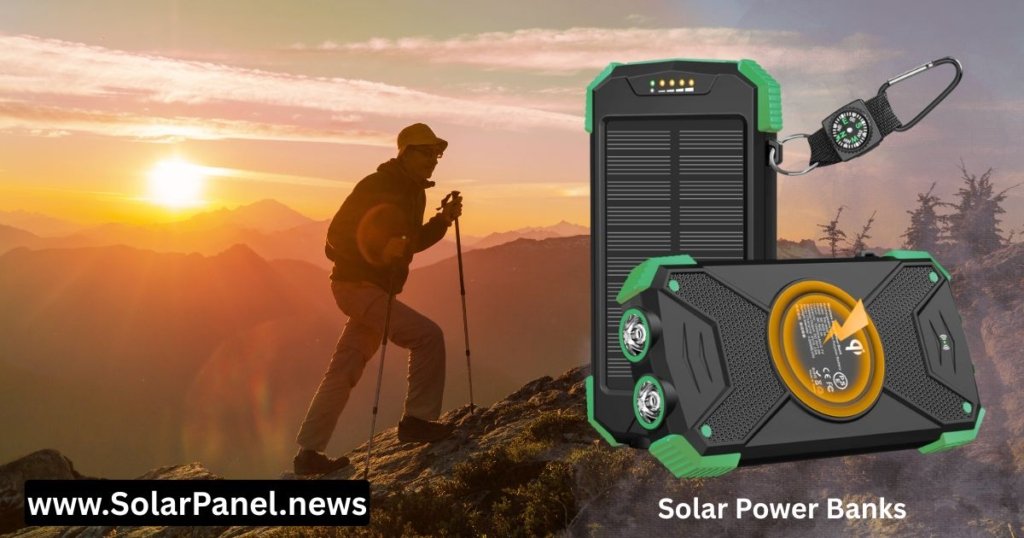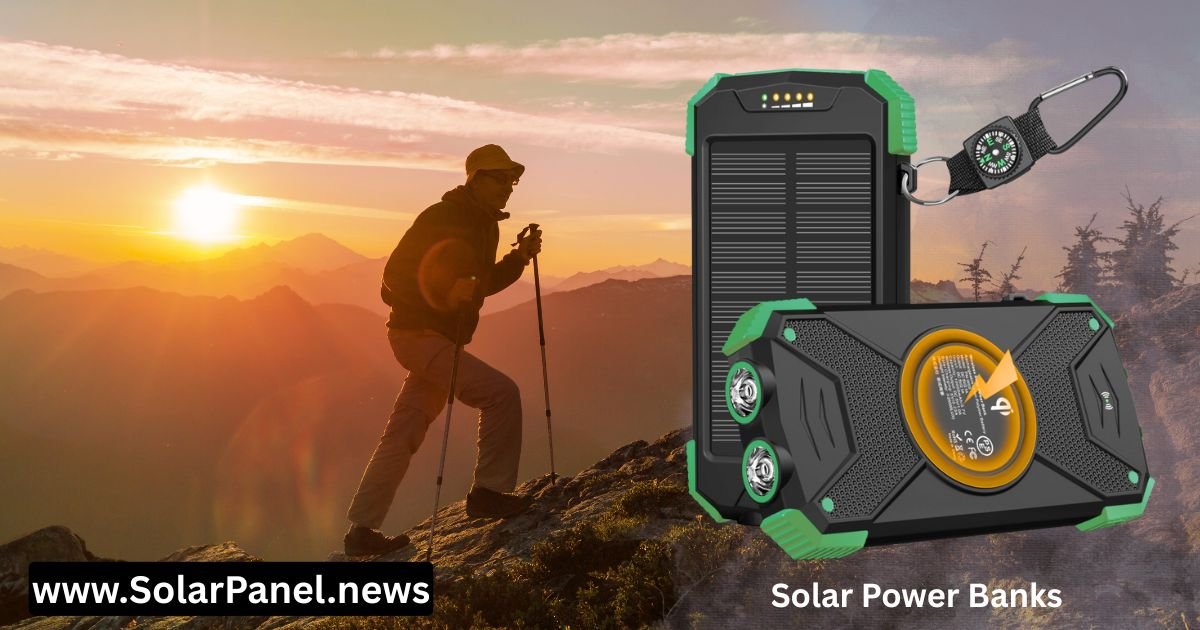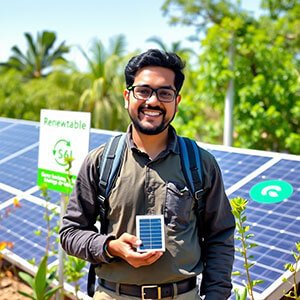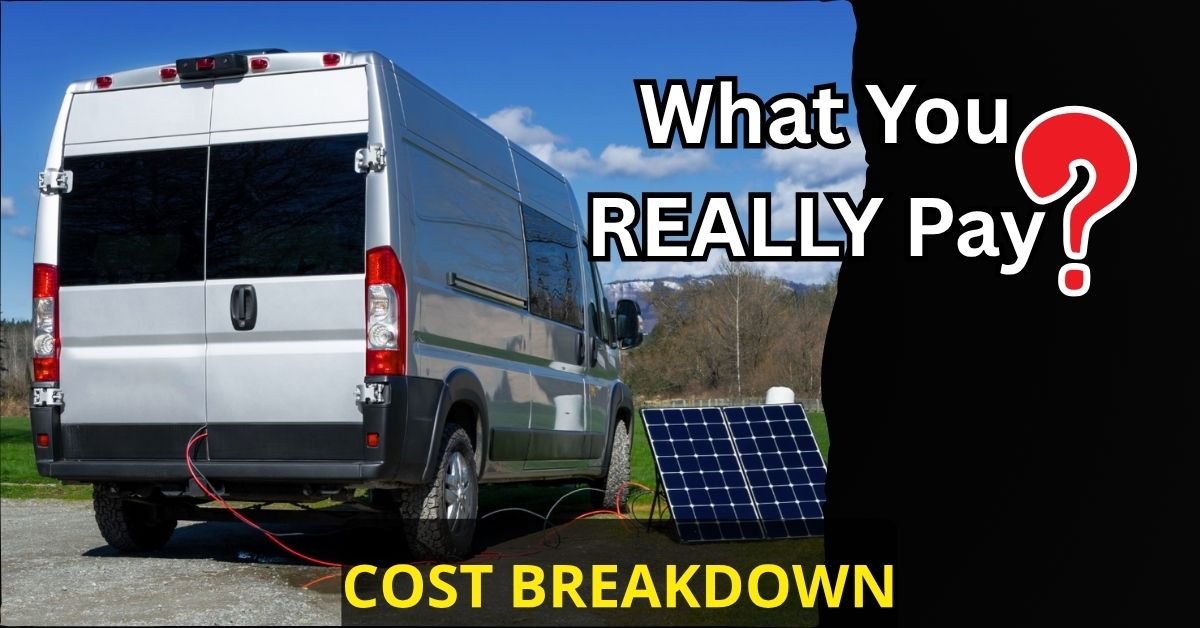Never get stranded with a dead phone or GPS on your next camping trip. In this guide, I’ll advise everything you need to know about choosing the perfect portable solar power bank for camping and your outdoor adventures in 2025. I’ll also help you understand battery capacity, solar panel efficiency, and other key features to ensure you stay powered up, no matter how far off the grid you go…
Sponsored by us
Why Do You Need a Portable Solar Power Bank for Camping?
In the modern era, you or all of us often need essential electronics when traveling in the natural forest or any camping. For example, from navigating with GPS to maintaining phone memory, sharing live cast on Facebook or YouTube with your fans and followers, etc., it has become necessary to have electricity stored in the context (I think it should also be considered as a safety issue at times).
All in all, a standard power bank will keep your trip enjoyable and safe; this is my sincere wish. So here I am going to guide you on how to choose the best portable solar power bank for camping to keep in your collection-
What Are the Real-World Benefits of Solar Power on the Trail?
“On my last year’s mountain trip, my regular power bank ran out of charge. Luckily, my travel buddy (Lucas)’s had a solar power bank, which allowed us both to keep our phones charged for navigation and emergency cases. Since that trip, I’ve been using a solar power bank all the time. You could say, it’s not just a gadget – it’s also an important safety gadget for me while traveling and away from home.”
Benefits you can get with this device:
- Your smartphone, GPS, headlamp, and camera can always be charged in the off-grid.
- No more relying on campsite charging stations or backup generators.
- As an eco-conscious traveler, any solar power bank from those mentioned below will be great for you.
How to Choose the Right Size and Capacity of a Power Bank?
When purchasing a portable solar power bank, the most important thing I consider is the battery capacity, which is measured in milliampere-hours (mAh).
What does battery capacity (mAh) really mean for solar power devices?
Milliampere-hours (mAh) indicate the total amount of energy stored in a power bank. A higher mAh rating means more energy stored and, as a result, more charge for my devices. For example, the smartphone I use when I’m out from my house or office, it’s battery capacity of around 5,000mAh. And one of my three power banks has a battery capacity of 10,000mAh, which is enough to charge my phone twice.
Note: A solar power bank means you can charge your devices as often as you want as long as the sun is out. However, you should definitely carry a high-capacity charger bank for overnight or cloudy travel.
How many devices will you be charging?
Before you buy a solar power bank, take stock of the electronics you’ll be bringing along.
Campsite Electronics Checklist:
- Smartphone
- Headlamp or lantern
- GPS unit
- Camera
- Portable speaker
- Other small electronics (e.g., fitness tracker, e-reader)
How long will your camping trip be?
The duration of your trip directly influences the capacity you’ll need.
“My office work often requires me to travel to other places on weekends, where I only carry my phone, so a 10,000mAh solar power bank is usually enough. However, if you are preparing for a week-long trip with multiple gadgets, I would suggest: Go for a model with at least 20,000mAh or larger.”
- Brand-Oriented and Outdoor Charger Pro: With over 10 years of experience in solar power banks, BLAVOR has already gained…
- Leading USB C Input Output Tech and Qi Wireless: The latest upgrade includes a USB-C output with 20W fast charging capab…
- Premium Battery and Smallest Solar Charger: BLAVOR uses the safer Lithium-cobalt battery, which is 50% more cycling time…
Below, I have given an easy-to-understand table guide on, how much power your solar bank should have, at night, cloudy skies, and weather conditions when you are off-grid:
| Trip Duration | Number of Devices | Recommended Capacity |
| Weekend (1-3 Days) | 1-2 | 10,000mAh |
| Long Weekend (3-5 Days) | 2-3 | 15,000mAh – 20,000mAh |
| Week-long (5+ Days) | Multiple | 20,000mAh+ |
Export to Sheets

What Key Features Should You Look for Before Buying?
Beyond capacity, several other features determine the performance and reliability of a portable solar power bank for camping. One of these is: the efficiency and wattage of the solar panel, along with it.
How important is solar panel efficiency and wattage?
The wattage of the built-in solar panels dictates how quickly the power bank can recharge itself from the sun. Most portable models have small panels (around 1.5W to 5W), which are best for topping up the battery rather than a full recharge from zero. The type of solar panel also matters. So in my opinion, Monocrystalline panels are generally more efficient, especially in less-than-ideal sunlight time, compared to polycrystalline panels.
How many output ports do you need?
Consider the types of devices you’ll be charging. Modern power banks often come with a combination of:
- USB-A: The standard rectangular port for most charging cables.
- USB-C: A smaller, reversible port that often supports faster charging (Power Delivery or PD).
- Wireless Charging: Allows you to charge compatible devices simply by placing them on the power bank.
What makes a solar power bank durable and weather-resistant?
Camping gear needs to be tough. So you should to look for power banks with an IP (Ingress Protection) rating. For example, an IPX5 rating means it can resist a sustained, low-pressure water jet spray, making it suitable for rain.
By the way, a higher rating like IP67 indicates it can be submerged in water. Also, features like a shockproof and dustproof casing are crucial for withstanding the rigors of the outdoors.
“I’ve dropped my share of gear on the trail. Rugged, shock-absorbent casing has saved my power bank more than once. My advice: Don’t underestimate the importance of durability.”
Best 3 Portable solar power banks for camping
Dear! I have provided a comparison table of the main features of the three solar power banks that I use. I hope you will get a clear idea after looking at it.
| Feature | BLAVOR Solar Power Bank | Hiluckey Outdoor Solar Charger | ToughTested Fast Charging Solar Power Bank |
| Capacity | 20,000mAh | 25,000mAh | 10,000mAh |
| Solar Wattage | 1.8W | 2.5W (Fold-out) | 1.5W |
| Ports | 2x USB-A, 1x USB-C | 3x USB-A, 1x USB-C | USB-C Port, USB-A Ports |
| Durability | IPX4 Water-Resistant | IP65 Water/Dust-Resistant | IP65 Waterproof |
| Weight | 450g | 550g | 400g |
You can purchase “Power Banks” that I use, from the Amazon store: if you want-
- Trusted ToughTested quality: Backed by over a decade of experience, ToughTested is renowned for producing rugged and dur…
- 5-year warranty for peace of mind: Enjoy long-lasting reliability with ToughTested’s commitment to quality, supported by…
- 10,000mAh high-capacity power bank: Provides up to 6 full charges for your devices, making it perfect for outdoor advent…
- Brand-Oriented and Outdoor Charger Pro: With over ten years of experience in solar power banks, BLAVOR has already gaine…
- Upgraded Highly Efficient Solar Panel Charging: 4 premium panels can produce 1.2A Max (300mA*4, under 25000Lux sunlight)…
- USB-C PD and QC3.0 18W Fast Charging: The unique PD 18W USB-C output can charge the laptop that supports PD protocol. Th…
- 2025 Upgraded Solar Panels: Experience a breakthrough in solar charging technology with our 2025 high-performance solar …
- Super-Fast Charging: With upgraded QC 3.0 technology, this solar power bank delivers fast charging at 5V/3A—reaching 65%…
- High Capacity: Built with a high-quality lithium polymer battery, the 25000mAh solar phone charger delivers ample power—…
How Do I Get the Most Out of My Solar Power Bank?
First of all, I want to say: having a solar power bank is one thing, but using it effectively is another.
What are the best solar charging methods that I follow?
- I place the charger panel in direct sunlight.
- I angle the panels towards the sun throughout the day for maximum exposure. That is, since the sun changes direction as the day progresses, I also place the panels at the correct angle.
- If dust accumulates on the solar panels, I wipe it off as much as possible.
Note: Solar charging times will vary greatly depending on the weather and sun intensity, which is normal! So understand the issue well in the geographical context of your location.
Can you charge it before you leave?
Of course, and that’s what you should do! Think of solar power as a way to charge your electricity, not as your primary charging method. So always remember to fully charge your portable solar power bank from a wall outlet before you head out on a trip.
Want to Next Tour with a Power Bank hassle-free? These Top 5 Solar Chargers for USB Devices that Lightweight, Fast and Travel-Ready for Your Journey with Electricity.
Expert Tips for You as a Camper
Tip 1: Always carry a small, non-solar power bank for emergencies.
Because it happened: I set off on a trip during a full sunny day, but the sky was covered with clouds on the first afternoon after reaching my destination, and then it started raining heavily the next day. As a result, I couldn’t charge via the solar bank due to the lack of sun.
Tip 2: Many solar power banks have a built-in flashlight, like my power bank does. This is a great, versatile feature for camping.
Tip 3: For backpackers like me, every gram counts as product weight. That means balancing the weight and portability of the power bank with the capacity requirements (this will keep your trip enjoyable).
I once went on a trip to the beach, carrying a lifebuoy and various other gadgets. You can’t imagine! What a heavy load of equipment I had to carry? The whole trip was tiring and disgusting.
Tip 4: Before buying any gadgets/devices, not just solar power banks from online eCommerce stores by home delivery or offline physical stores, read reviews from outdoor forums or platforms like our website for real-world performance insights.
If you want, you can purchase any of the three power banks I have recommended. I will get some commission and will get interest and inspiration for my writing, but you will not have to spend any extra costs.
Common Mistakes to Avoid
- Relying on solar power alone: I have heard from many people that before buying a power bank, they thought: a small solar panel can fully charge a high-capacity power bank in a short time, so they bought a low-capacity power bank. But you should buy the right solar power bank depending on your practical equipment.
- Temperature extremes: I never keep my power bank in a hot tent or in freezing temperatures, as it can permanently damage the battery. You should also be careful about this.
- Output compatibility should not be ignored: To avoid slow charging or possible damage, make sure that the output voltage and amperage of the power bank is compatible with your mobile and other DC devices. This is mandatory.
- Buy a gadget with the right cables: Make sure that the charging cables specified for your power gadget are correct. Because incorrect cable connections can damage your device and battery.
Quick Recap: Choosing Your Camping Power Bank
Capacity Selection Guide:
- Short trips (for 2-3 days) with minimal devices: 10,000mAh capacity
- Weekend trips with multiple devices (for 4-7 days): 15,000-20,000mAh capacity
- Week-long adventures or high-drain devices: 25,000mAh+ capacity
- Extended expeditions: 30,000mAh+ or multiple units.
Essential Features Checklist:
- Minimum 5-10W solar panel capacity with monocrystalline panels
- Multiple output ports, including USB-C with Power Delivery
- IPX5+ water resistance rating
- Shock-resistant, durable construction
- Operating temperature range suitable for your camping conditions
Pro Tips for Success:
- Always start trips with 100% battery charge
- Use solar charging to maintain rather than fully recharge
- Position panels for maximum sun exposure throughout the day
- Carry backup power sources for critical devices
- Test all functionality before departing
Frequently Asked Questions (FAQ)
1. Are solar power banks good for camping?
Solar models are a useful and functional gadget that is the perfect travel companion for campers and outdoor enthusiasts. You can easily purchase them in a variety of capacities to suit your needs.
2. What is the disadvantage of solar power bank?
The biggest drawback is the dependence on sunlight: because solar power banks need to be exposed to sufficient sunlight to work properly. This means they cannot be charged at night, in heavy shade, in cloudy conditions, in short, in adverse weather conditions.
3. Are solar power banks waterproof?
Many solar power banks made for camping are water-resistant (check the IP rating), meaning you can easily carry them around during rainy season trips, or even enjoy life at the beach or mountain stream while using your electronic devices. Be careful, though: most are not fully waterproof and should not be intentionally submerged in water.
4. Can I charge my laptop with a portable solar power bank?
Most compact portable solar power banks are designed for small electronics and don’t have the power output to charge a laptop. For that, you’ll need a larger portable power station with higher capacity and an AC outlet.
But I have a solution for that too: read this article by Jackery Explorer Power Station to learn more.
5. What’s the difference between a solar power bank and a solar generator?
A solar power bank is a portable unit for charging personal, small electronic gadgets like phones and headlamps. On the other hand, a solar generator (i.e. portable power station) is a comparatively larger, more powerful system that is capable of simultaneously running multiple electronic appliances and devices, including refrigerators, laptops, mobiles, CPAP machines, etc.
6. What is the best battery for a solar power bank?
In short: Lithium-ion batteries are better. Although there are three types of batteries used for energy storage in off-grid systems at home: 1) Lead-acid, 2) Lithium-ion, and 3) Saltwater. However, I use lithium-ion batteries and I recommend you to use them too. Because the best and most sustainable battery option for solar panel systems is: Lithium-ion batteries!
There is an Off-Grid Power System for Hikers: Best Solar Power Banks for Hiking That Keep You Charged Anywhere.
First, understand the needs of your device and choose the portable solar power bank accordingly. Remember: Don’t bear the tension of battery drain by buying power gadgets everywhere. So to buy the durable product with maximum power benefits:














